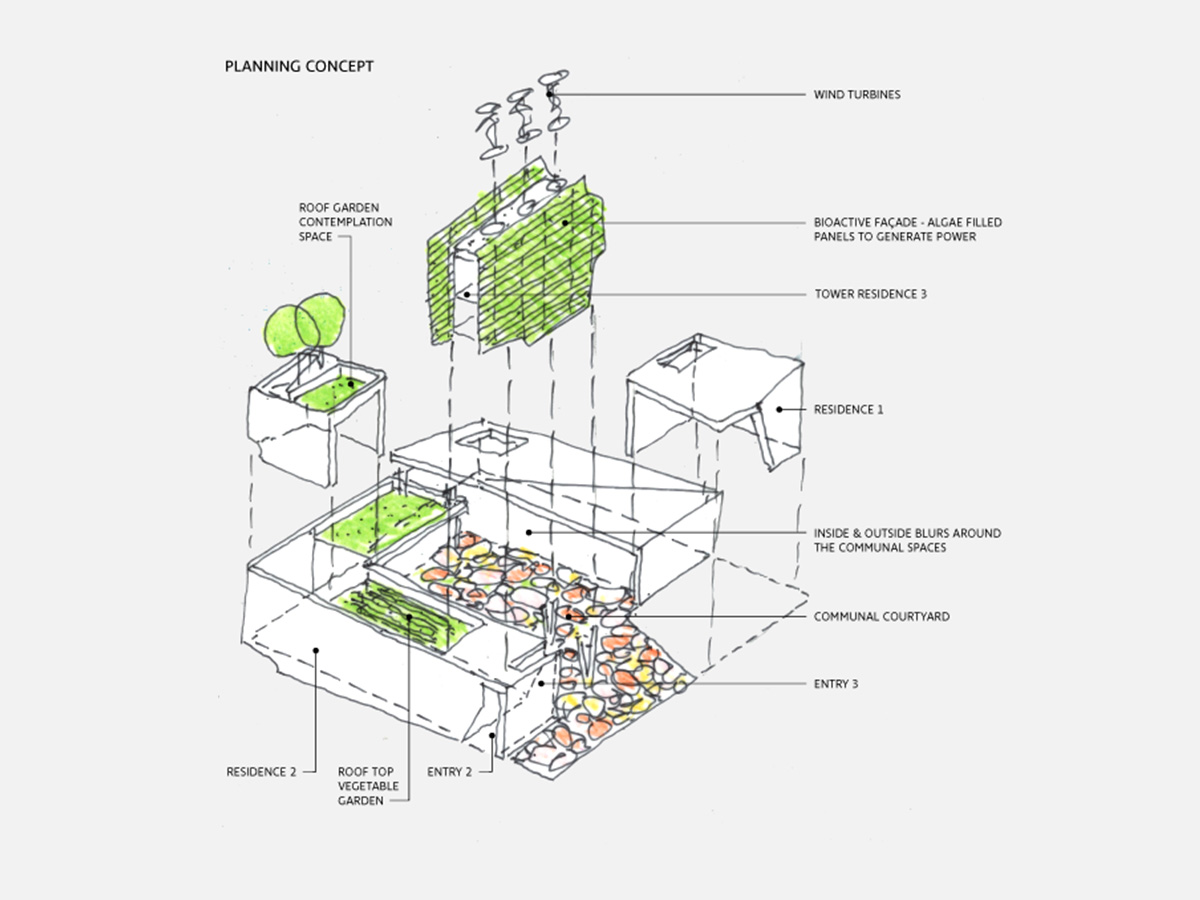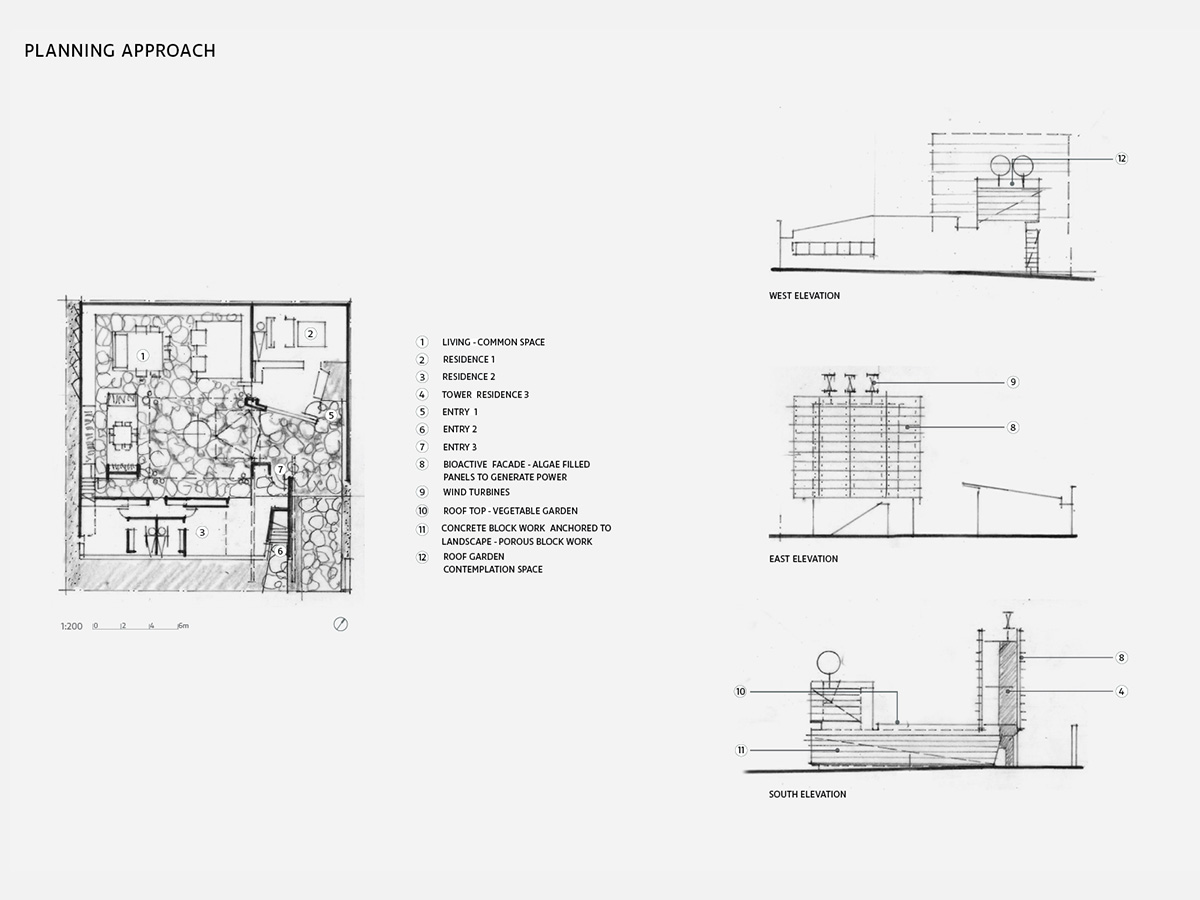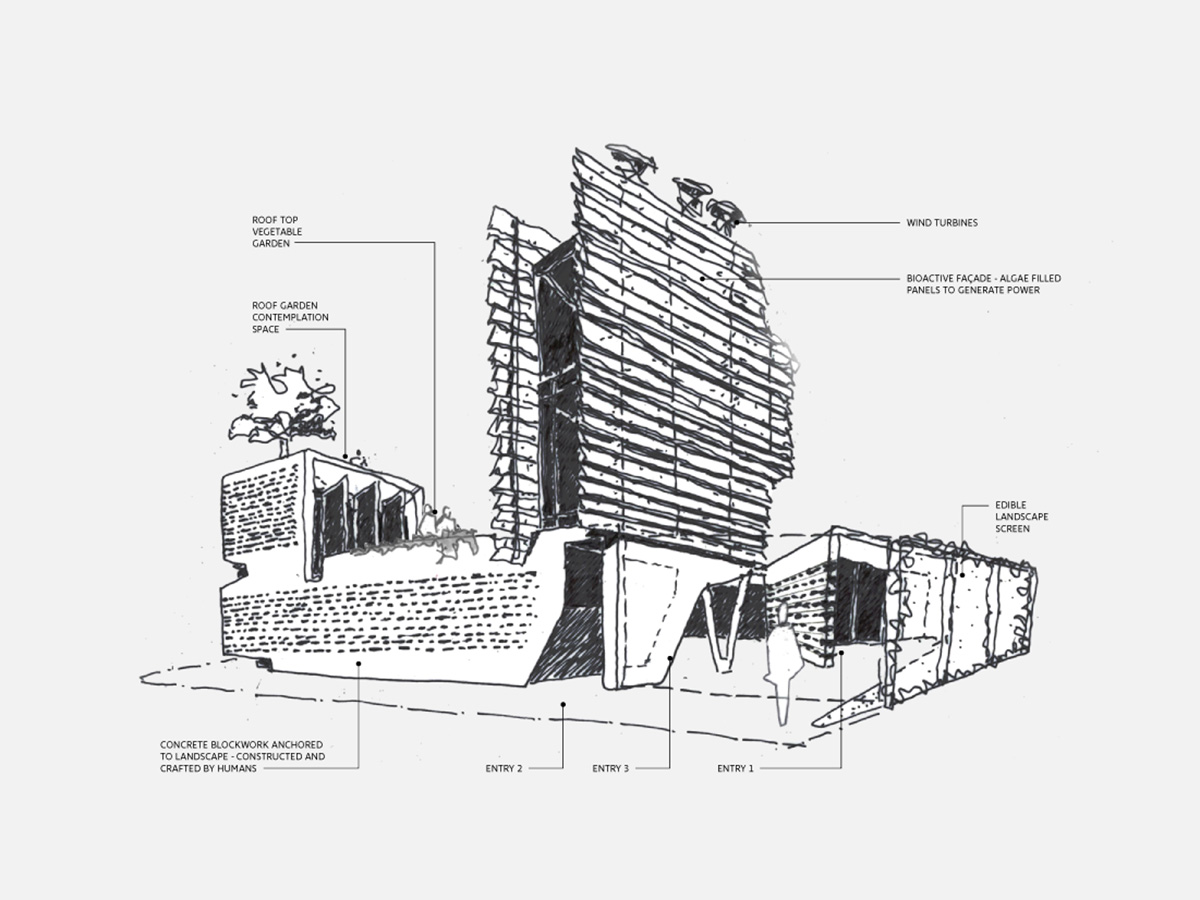Biota Familia
2017
Four practices – Kengo Kuma & Associates, Studio MK27 (Marcio Kogan and Maria Cristina Motta), Sean Godsell Architects and Blight Rayner Architecture – were asked by Smith Journal to imagine a specific house for a family to survive in an apocalyptic age, when robot uprisings are a constant threat.
Our design is for a multi-generational family to live together, using their combined human intellect to outmanoeuvre artificial intelligence.
Three residences co-exist on a 430 m2 site, sharing food preparation and consumption in a central communal space. Equipped also with a digital library, this space invites collective problem-solving, as well as social gathering. Older relatives occupy the lower level residences, while younger ones occupy a tower and keep lookout for unwanted guests.
The house is fortified by perforated block walls which open and close at a corner and promote natural ventilation. Algae-lined adjustable louvres thrive on sunlight and hydroponics, and also produce edible vegetables along with the rooftops. Wind turbines and solar-hydrogen batteries store long-term energy.
We imagined this house as much as a house for today as for the future, expandable should more generations be added, in equal parts self-sustainable and generationally mutually supportive.
Client
Smith Journal





